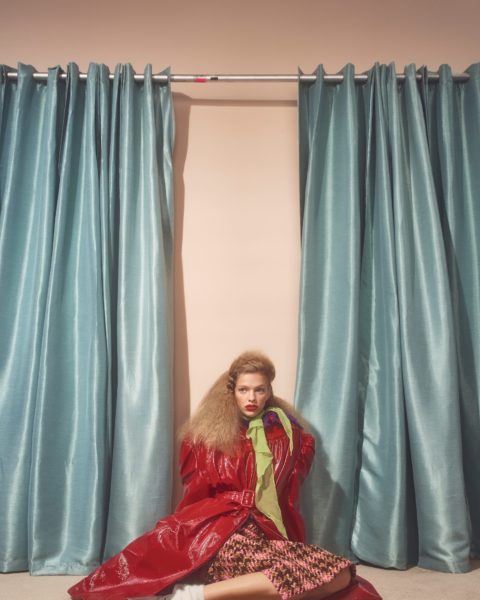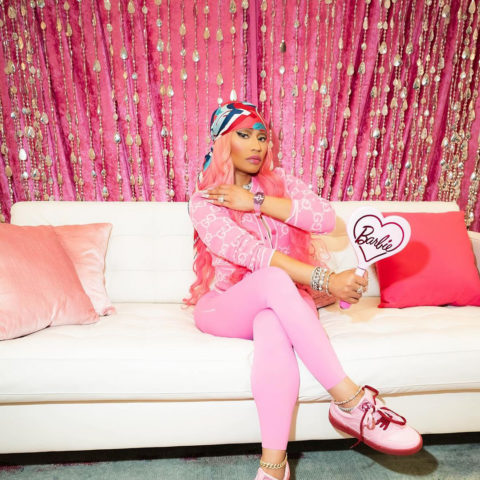How to Be Body Positive Even When You’re Suffering From Dressing Room Anxiety
Despite our thriving careers and satisfying home and social lives, it seems that when we wriggle into a pair of trousers, many of us are cut from the same self-disparaging cloth.
In the buzzy Netflix show Tidying Up with Marie Kondo, neatness advocate Marie Kondo encourages us to only keep things in our homes that “spark joy.” It’s a lovely notion, conjuring thoughts of favourite trinkets from world travels, beloved heirlooms and closets full of clothing that elicits only happy thoughts.
Yet anyone with a non-Kondo-ized closet knows that this is not usually the case. We hold on to pieces we hope to wear after we lose the mythical 10 pounds we’ve been chasing for years. These clothes are supposed to inspire us, but they usually just make us feel guilty. And anyone who has spent time in a fitting room is familiar with the feeling of impending dread that sets in as soon as we start to try something on. Our heads instantly fill with gloomy thoughts about our butts being too big or our shoulders too broad. Despite our thriving careers and satisfying home and social lives, it seems that when we wriggle into a pair of trousers, many of us are cut from the same self-disparaging cloth.
Despite our thriving careers and satisfying home and social lives, it seems that when we wriggle into a pair of trousers, many of us are cut from the same self-disparaging cloth.
Surely in this age of inclusivity and diversity, we should be able to break this habit of pointing out our perceived flaws. While great strides have been made in the past five years when it comes to conversations about body positivity, experts and activists agree that there’s still a long way to go.
“Trying on clothing evokes so much emotion because it’s an intimate experience,” says Ben Barry, chair and associate professor of equity, diversity and inclusion at Ryerson University’s School of Fashion in Toronto. “Any existing doubt or internalized negative thought becomes mixed with other setbacks, including poor fit or when diverse sizing is relegated to the back of the store while standard-conforming clothing shines brightly in a shop window.”
Surely in this age of inclusivity and diversity, we should be able to break this habit of pointing out our perceived flaws.
Amanda Scriver, freelance journalist and body image advocate, emphasizes the need for brands to offer a shopping experience that is truly inclusive. “The Roxy Earle x Le Château collection is an example of a brand that did it right,” she says. “There was no distinct ‘Here’s the Roxy line.’ I couldn’t actually distinguish where it was. I was like, ‘Cool, I can’t tell where the plus-size stuff is.’” This integration—and, let’s face it, affirmation that no matter your size, you belong in a retailer’s store and in its clothing—is paramount to a kinder shopping experience. “If you’re going to do it, do it properly,” says Scriver. “I don’t want to be seen as an afterthought.”
But this internalized self-deprecation won’t end just because we have more inclusive clothing choices; it’s also about being more inclusive in the media messaging around who can participate in and enjoy fashion, says Barry, noting that social media has been instrumental in this shift. “It’s more about celebrating that clothing is a vehicle to express who you are and that there’s room for all bodies to do that, including fat bodies, non-binary bodies and racialized bodies.”
“Any existing doubt or internalized negative thought becomes mixed with other setbacks, including poor fit or when diverse sizing is relegated to the back of the store while standard-conforming clothing shines brightly in a shop window.”
While Instagram has democratized fashion for some, it has also fostered a culture of comparison that can be just as detrimental as comparing yourself to trim models in magazines and advertising campaigns, argues Kaitlyn Axelrod, a registered social worker and program and outreach coordinator at Sheena’s Place, a support centre for anyone with eating disorders. “The rise of social media, because it’s photo-based, promotes visual comparison in a way that’s not productive,” she says.
So how can you be kinder to yourself the next time you’re in a fitting room? Start by asking yourself what’s behind your negative self-talk, suggests Scriver. “I heard my mom talking about her body and the way she felt about herself, and those were things that I sort of mimicked and felt about my own body,” she explains, adding that on her journey toward self-love and body positivity, she learned how to dress in a way that makes her feel comfortable and happy, despite how it may look to others. “I stopped trying to fit the mould.”
If you’re having a hard time reconciling how you feel about your body versus how it’s perceived by family members, peers and the media, Axelrod suggests you shift the conversation in your head. “By practising positive self-talk, we can change the neuroplasticity in our brains to be programmed to not have as many negative thoughts about ourselves,” she says.
“It’s more about celebrating that clothing is a vehicle to express who you are and that there’s room for all bodies to do that, including fat bodies, non-binary bodies and racialized bodies.”
And on the subject of negative thoughts, it’s also time to rid ourselves of the notion of “flattering,” which is just coded language for clothes that make our bodies look as close to an idealized standard as possible. “When it comes to managing the way we respond to perceived flaws, it’s not that we should be comforting people by saying ‘You don’t look wide in that dress,’” suggests Lauren Chan, founder of Henning, a size 12-plus clothing line that is launching this fall. “Instead, we should say ‘You look wide in that dress because that dress is wide.’ And there’s nothing wrong with that.” In other words, as long as it sparks joy, to hell with it.








